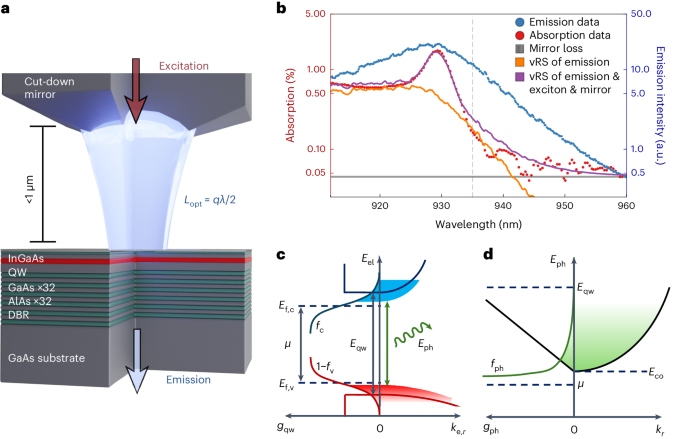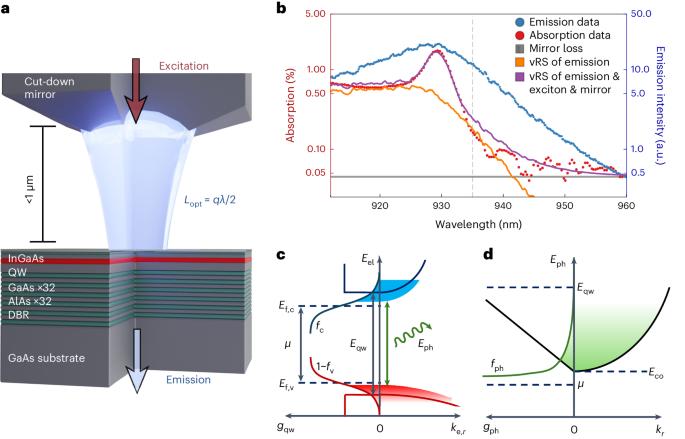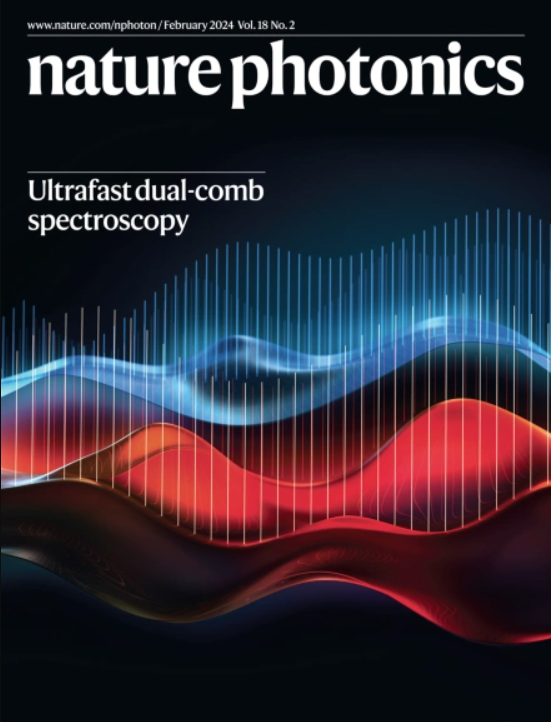Bose–Einstein condensation of light in a semiconductor quantum well microcavity
IF 32.3
1区 物理与天体物理
Q1 OPTICS
引用次数: 0
Abstract
When particles with integer spin accumulate at low temperature and high density, they undergo Bose–Einstein condensation (BEC). Atoms, magnons, solid-state excitons, surface plasmon polaritons and excitons coupled to light exhibit BEC, which results in high coherence due to massive occupation of the respective system’s ground state. Surprisingly, photons were shown to exhibit BEC recently in organic-dye-filled optical microcavities, which—owing to the photon’s low mass—occurs at room temperature. Here we demonstrate that photons within an inorganic semiconductor microcavity also thermalize and undergo BEC. Although semiconductor lasers are understood to operate out of thermal equilibrium, we identify a region of good thermalization in our system where we can clearly distinguish laser action from BEC. Semiconductor microcavities are a robust system for exploring the physics and applications of quantum statistical photon condensates. In practical terms, photon BECs offer their critical behaviour at lower thresholds than lasers. Our study shows two further advantages: the lack of dark electronic states in inorganic semiconductors allows these BECs to be sustained continuously; and quantum wells offer stronger photon–photon scattering. We measure an unoptimized interaction parameter ( $$\tilde{{{{{g}}}}}$$ ≳ 10–3), which is large enough to access the rich physics of interactions within BECs, such as superfluid light. Photon Bose–Einstein condensation is observed in a semiconductor laser, where thermalization and condensation of photons occur using an InGaAs quantum well and an open microcavity. The distinction between regimes of photon Bose–Einstein condensation and conventional lasing are clearly identified.


光在半导体量子阱微腔中的玻色-爱因斯坦凝聚
当具有整数自旋的粒子在低温和高密度下聚集时,它们会发生玻色-爱因斯坦凝聚(BEC)。原子、磁子、固态激子、表面等离子体极化子和与光耦合的激子都会出现玻色-爱因斯坦凝聚现象,由于大量占据各自系统的基态,从而产生高相干性。令人惊讶的是,最近有研究表明,光子在有机染料填充的光学微腔中表现出 BEC,由于光子的质量小,这种现象在室温下就会发生。在这里,我们证明了光子在无机半导体微腔中也会热化并发生 BEC。虽然人们认为半导体激光器的工作是在热平衡之外进行的,但我们在我们的系统中发现了一个良好的热化区域,在这里我们可以清楚地区分激光作用和 BEC。半导体微腔是探索量子统计光子凝聚物的物理和应用的强大系统。在实际应用中,光子 BEC 的临界行为比激光的临界行为更低。我们的研究还显示了另外两个优势:无机半导体中缺乏暗电子态,这使得这些 BEC 可以持续存在;量子阱提供了更强的光子-光子散射。我们测量了一个未优化的相互作用参数(\(\tilde{{{{{g}}}}}\) ≳10-3),这个参数足够大,可以获得BEC内部丰富的相互作用物理,比如超流体光。
本文章由计算机程序翻译,如有差异,请以英文原文为准。
求助全文
约1分钟内获得全文
求助全文
来源期刊

Nature Photonics
物理-光学
CiteScore
54.20
自引率
1.70%
发文量
158
审稿时长
12 months
期刊介绍:
Nature Photonics is a monthly journal dedicated to the scientific study and application of light, known as Photonics. It publishes top-quality, peer-reviewed research across all areas of light generation, manipulation, and detection.
The journal encompasses research into the fundamental properties of light and its interactions with matter, as well as the latest developments in optoelectronic devices and emerging photonics applications. Topics covered include lasers, LEDs, imaging, detectors, optoelectronic devices, quantum optics, biophotonics, optical data storage, spectroscopy, fiber optics, solar energy, displays, terahertz technology, nonlinear optics, plasmonics, nanophotonics, and X-rays.
In addition to research papers and review articles summarizing scientific findings in optoelectronics, Nature Photonics also features News and Views pieces and research highlights. It uniquely includes articles on the business aspects of the industry, such as technology commercialization and market analysis, offering a comprehensive perspective on the field.
 求助内容:
求助内容: 应助结果提醒方式:
应助结果提醒方式:


